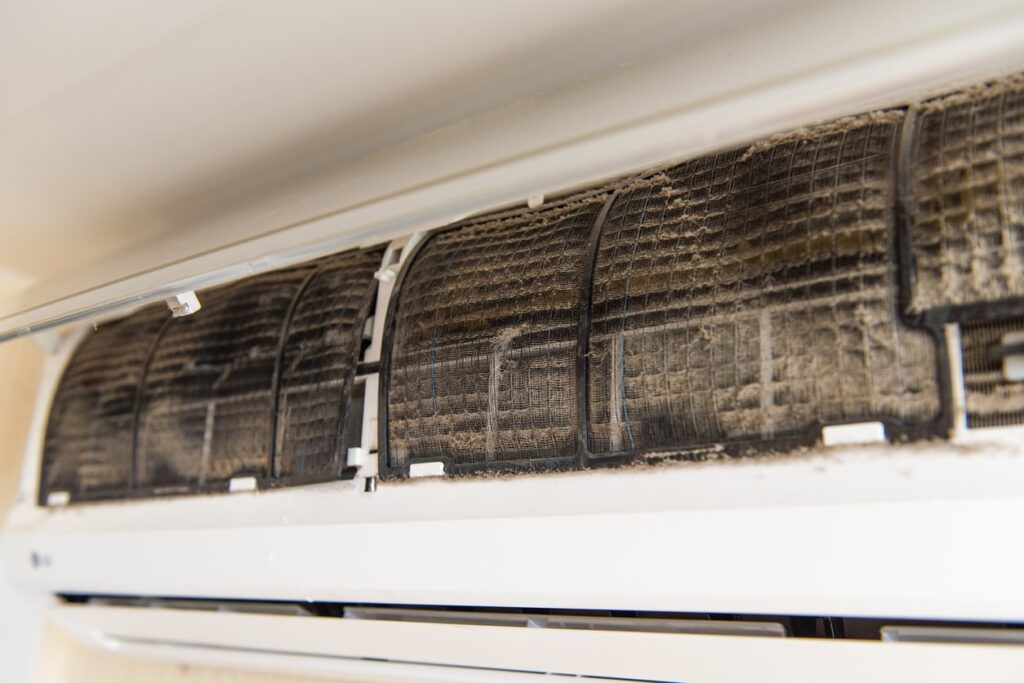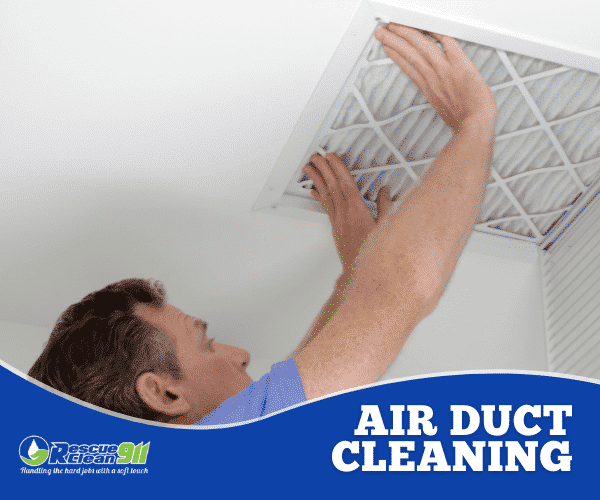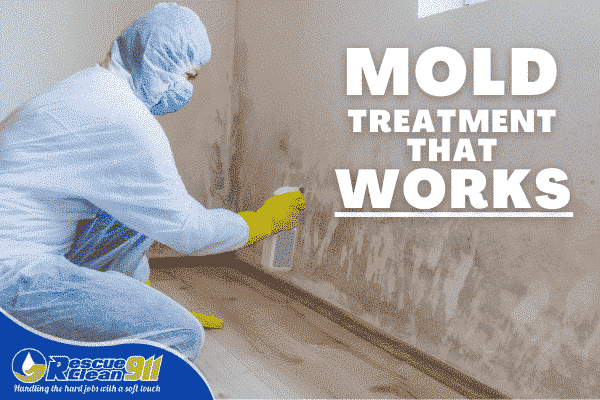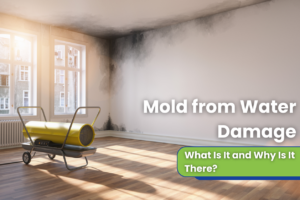When it comes to maintaining your HVAC system, it’s essential to keep a keen eye on your air vents and air ducts. Mold growth in your air vent, specifically black mold, could be a silent and dangerous culprit lurking in your home. Not only is it unpleasant to look at, but it can also lead to health problems, including allergic reactions like itchy eyes or respiratory issues.
How Common is Mold in Air Vents?

Mold in air vents is fairly uncommon, but there is definitely potential for it to happen. It thrives in damp, dark environments with poor ventilation, like an air duct. When there’s a temperature difference in the environment, such as from your air conditioner, it causes condensation that promotes mold growth. Regular cleaning and regular maintenance can help prevent this issue.
Home and business owners in certain areas of the country are more likely to find mold growth in their air vents than others. For example, the hot, humid weather conditions of South Florida provide the perfect environment for mold to flourish.
Signs of Mold in Air Vents
Mold creeping into your HVAC system is a subtle invader that leaves specific clues behind. The musty odor in your home is often the first sign, resembling the smell of wet socks or rotten wood. This could be a clear indicator of mold thriving within your air vent or air duct. A well-functioning HVAC system should circulate fresh and clean air, not a musty smell. An easy way to tell if this odor is coming from your AC unit or not is to see if the strength of the smell increases when you turn on the heat or AC.
The presence of visible mold is another giveaway. Look out for black spots or black dust around your air vents or AC vents. This could appear as tiny specks or as larger patches. Noticing these on your vent indicates a potentially larger mold problem lurking within the vent system.
Black Mold
One particular mold to keep an eye out for is Stachybotrys chartarum, commonly known as black mold. Black mold is notorious for its high toxicity and the serious health problems it can cause. It usually appears as a slimy black layer, but if it dries out, it can resemble black dust. If you spot these sinister black spots in your AC ducts or around your air vent, it’s time to address this immediately. However, remember not to touch these black spots with bare hands. This mold can release toxic spores, which can pose health risks if inhaled or come in contact with the skin.
Can Mold in Air Vents Make You Sick?

The straightforward answer is yes, mold, especially black mold hiding in air vents, can trigger various health issues. This silent villain can release myriads of microscopic mold spores into the air, which we may inhale without even realizing it. These spores can trigger a series of allergic reactions, which often start as a series of innocent symptoms like itchy eyes, a runny nose, or difficulty breathing. If you or your family members start experiencing these symptoms without an apparent reason, it could be due to mold spores circulating through your air vents.
Moreover, mold exposure can lead to more serious health problems, especially for individuals with pre-existing respiratory conditions. Issues may include respiratory problems, chronic cough, or wheezing. In addition, mold exposure can lead to ‘mold sickness,’ which manifests as constant fatigue, headaches, and even brain fog. These symptoms often go undetected, and individuals may not realize that they are sick until the mold problem is addressed. Therefore, it’s crucial to tackle any mold issue promptly, with special emphasis on black mold, to prevent these health risks.
How to Get Rid of Mold in Air Vents
Now, let’s talk about mold removal. While you might be tempted to tackle the mold problem on your own with a bleach solution, it’s important to note that trying to remove mold yourself isn’t recommended. This is because improper handling of mold can inadvertently spread mold spores throughout your home.
Instead, rely on a professional mold remediation service. These experts have the necessary tools and training to safely remove mold from your HVAC system, including the tricky air ducts. They can also provide advice on preventing future mold growth, which often involves ensuring good ventilation and taking care of any excess moisture sources like a leaking drip pan.
How to Prevent Mold Growth in Your Air Vents
Controlling mold growth in your HVAC system necessitates a proactive approach. A key strategy involves regular air duct cleaning. This process helps mitigate the risk of mold by ensuring the removal of dust and other particulates, including potentially harmful mold spores, from your air ducts.
Air Duct Cleaning

Air duct cleaning is more than a surface-level task. It involves thorough brushing and vacuuming of the internal surfaces of the ducts, removing dirt and debris that could become a potential food source for mold. As these particulates are removed, mold spores, which could contribute to new mold colonies, are also eliminated.
Routinely Changing Your Air Filter
Another component of your HVAC system that requires regular attention is your air filter. A clean air filter effectively captures airborne particles, including mold spores, from circulating within your home. A dirty or clogged filter, on the other hand, not only diminishes air quality but also becomes a potential haven for mold growth, contributing to a musty smell in your home. Hence, frequent checking and replacing of your air filter is crucial to keep your indoor environment fresh and mold-free.
Keep an Eye on Your Drip Pan
Equally important is the drip pan, a commonly overlooked component of your air conditioner. The drip pan is designed to collect condensation generated by your cooling system. However, if left unattended or not properly maintained, the drip pan can quickly become a breeding ground for mold due to the consistent presence of water. Regular inspection and cleaning of the drip pan can prevent excess moisture, keeping mold growth at bay.
Quickly Dealing with Water Damage
Furthermore, addressing any issues of water damage promptly and ensuring your home is adequately ventilated can help prevent mold growth. Effective temperature and humidity control can deter mold spores from multiplying. It’s also wise to have regular maintenance checks on your HVAC unit to spot and rectify any conditions that may encourage mold growth.
By taking these preventative measures, you can maintain a healthy HVAC system and a mold-free home, contributing significantly to your overall indoor air quality and the health of those residing in your home.
Closing Thoughts
To summarize, dealing with mold in air vents requires vigilance and a proactive approach. Look out for signs of mold such as a musty odor, black dust, or visible mold around your air vent. Keep in mind that molds, especially toxic variants like black mold, can cause allergy symptoms and other health problems. If you suspect a mold problem, don’t hesitate to call a professional mold remediation service to ensure a thorough and safe mold removal process.
Don’t overlook regular maintenance of your HVAC system. This includes regular cleaning of your air ducts, replacing your air filter, and ensuring your drip pan is in good condition. In the long run, these actions can save you from costly repairs and potential health issues related to mold exposure.
Remember, a clean and well-maintained air vent isn’t just about aesthetics. It’s about preserving the health and safety of everyone in your home.
Professional Mold Remediation and Removal in South Florida from Rescue Clean 911

Acting swiftly against mold is vital to safeguard your residential or commercial space. If you are looking for a mold remediation service in South Florida, trust the expertise of Rescue Clean 911. As a licensed, bonded, and insured mold removal company, we provide not only services you can count on but also a sense of security knowing you’re in good hands. Our mold removal services ensure a thorough and safe removal process, carried out by professionals trained to tackle mold issues with the utmost precision.
From securing the affected site to assessing indoor air quality post-removal, Rescue Clean 911 stands as your reliable partner for top-tier mold remediation services. If you suspect a potential mold problem, don’t hesitate to reach out.
Besides mold remediation, we also offer an array of other services to fully restore your space. These include water damage restoration, air duct cleaning, and more. Equipped with advanced tools and industry knowledge, we’re prepared to return your home or commercial building to its original state following severe mold growth, water or fire damage. As a comprehensive remediation and restoration company, we pride ourselves on delivering exceptional customer service.










